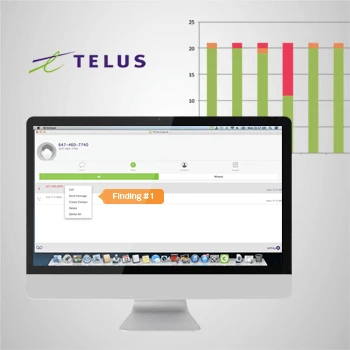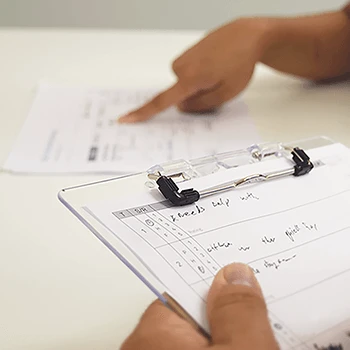What exactly is product concept testing and when should we use it?
Product concept testing captures user feedback very early in the design phase, before detailed development begins. We present high-level solutions through sketches, storyboards, or mockups to gather user response about appeal, feature combinations, and value trade-offs. This helps eliminate poor ideas quickly and saves significant time and resources that might otherwise be spent developing concepts users don't want.
Tip: Use concept testing when you have multiple design directions and need to understand user preferences before investing in detailed development work.
How does concept testing differ from usability testing?
Concept testing answers 'which do you prefer' while usability testing answers 'which is easier to use.' Concept testing is perception-based research about customer appeal and preference, while usability testing is behavior-based research about task completion and ease of use. Concept testing requires only high-level concepts, while usability testing needs functional prototypes or near-complete experiences.
Tip: Don't expect concept testing to reveal usability issues—use it for preference validation, then follow with usability testing for interaction validation.
What types of concepts work best for testing at this early stage?
Simple, low-fidelity concepts work best for testing—sketches, storyboards, basic mockups, or wireframes that convey the core idea without visual polish. Flashy, high-fidelity mockups can bias feedback and distract from the fundamental concept being evaluated. The goal is to test the idea itself, not the visual execution or detailed interactions.
Tip: Keep concepts deliberately rough and low-fidelity to focus feedback on the core value proposition rather than visual design details.
How does Akendi's Experience Thinking framework enhance concept testing?
Our Experience Thinking framework ensures concept testing considers how your product connects across brand, content, product, and service experiences. Rather than testing concepts in isolation, we evaluate how they support your broader experience strategy and connect to other customer touchpoints. This prevents concepts that might test well individually but create disconnected experiences.
Tip: Test concepts against your existing brand experience and service touchpoints to ensure coherent experience evolution rather than fragmented improvements.
What's the difference between product concept testing and market research?
Product concept testing focuses specifically on user experience and interaction preferences for digital products and services. Market research examines broader market demand, competitive positioning, and business viability. We combine user experience expertise with concept validation to ensure solutions work for real users in actual contexts, not just appeal to general market preferences.
Tip: Use market research to validate demand and positioning, then use product concept testing to ensure the actual user experience delivers on that market promise.
How early in the product development process should we conduct concept testing?
Concept testing is most valuable after you've identified the problem and potential solution directions but before detailed design and development work begins. This typically happens during the strategy and early design phases, when you have multiple concepts to evaluate but haven't committed significant resources to any specific direction.
Tip: Plan concept testing immediately after problem definition and before detailed wireframing or prototyping to maximize the impact of user feedback on your design direction.
What questions can concept testing reliably answer versus what it cannot?
Concept testing reliably answers questions about user preference, appeal, perceived value, and likelihood of adoption. It cannot answer questions about ease of use, task completion efficiency, or detailed interaction behaviors. It reveals what users find attractive and valuable but not how they'll actually behave when using the product in real contexts.
Tip: Frame concept testing questions around preference and appeal rather than usability or behavior prediction to get reliable insights within the method's capabilities.
What methods do you use to conduct product concept testing sessions?
We use structured one-on-one interviews and focus groups, depending on the research objectives and concept complexity. Individual sessions provide deeper insights into personal preferences and reasoning, while focus groups reveal social dynamics and group consensus. We can conduct sessions in-person, remotely, or in hybrid formats based on participant accessibility and project requirements.
Tip: Choose individual interviews when you need detailed reasoning about preferences, and focus groups when social dynamics or group consensus are important to your product's success.
How many participants do you typically include in concept testing studies?
Participant numbers depend on research goals and methodology. For qualitative insights, we typically include 8-15 participants per target segment. For quantitative preference validation, we may include 30-50 participants per segment. The key is ensuring participants represent your actual target users rather than achieving arbitrary sample sizes.
Tip: Focus on participant quality and representation rather than large numbers—better insights come from the right participants than from many generic ones.
What types of stimuli and materials work best for presenting concepts?
Effective stimuli include hand-drawn sketches, simple wireframes, storyboards, basic mockups, and concept descriptions that convey the core idea without implementation details. We avoid high-fidelity visuals that might bias responses toward surface-level design elements rather than fundamental concept evaluation. Materials should be clear enough to understand but rough enough to focus on concept merit.
Tip: Present concepts at the minimum fidelity needed for understanding to avoid distracting feedback about visual design instead of core concept value.
How do you structure concept testing sessions to get reliable feedback?
We structure sessions with clear objectives, unbiased concept presentation, and systematic feedback collection. Sessions typically include concept introduction, exploration time, preference ranking, and detailed discussion about reasoning. We avoid leading questions and ensure all concepts receive equal presentation time and context to prevent bias in responses.
Tip: Present concepts in different orders across participants and avoid indicating your preferred direction to prevent influencing participant responses.
What combination of qualitative and quantitative feedback do you gather?
We collect both preference rankings and detailed reasoning to understand not just what users prefer but why they prefer it. Quantitative data includes concept ratings, feature importance rankings, and likelihood of use scores. Qualitative insights explore user reasoning, emotional responses, and contextual considerations that influence preferences.
Tip: Always combine preference data with reasoning insights—understanding why users prefer certain concepts is often more valuable than just knowing which ones they prefer.
How do you handle concept testing for products with multiple user types?
We segment testing by user type to understand how different audiences respond to concepts differently. Each user segment participates in separate sessions tailored to their context and needs. We then analyze results across segments to identify concepts that work broadly versus those that appeal to specific user types, helping inform strategic decisions about target audiences.
Tip: Test concepts with all key user segments rather than assuming preferences will be consistent across different user types and contexts.
What's your approach to remote versus in-person concept testing?
Remote testing offers broader participant reach and natural environment feedback, while in-person testing enables richer observation and deeper discussion. We choose format based on participant accessibility, concept complexity, and observation requirements. Both formats use structured protocols to ensure consistent concept presentation and feedback collection.
Tip: Consider your participants' comfort with technology and the complexity of concepts when choosing format—complex concepts may benefit from in-person facilitation and discussion.
How does concept testing connect to the broader Experience Thinking framework?
Through Experience Thinking, we test concepts not just as isolated products but as part of connected brand, content, product, and service experiences. We evaluate how concepts align with brand promise, support content strategy, integrate with existing products, and enhance service delivery. This ensures concepts contribute to coherent end-to-end experiences rather than creating fragmented touchpoints.
Tip: Evaluate concept testing results against your complete experience ecosystem to identify concepts that strengthen overall experience coherence.
How do you ensure concept testing considers brand experience implications?
We evaluate concepts against brand personality, values, and promise to ensure alignment with brand strategy. Concept testing includes questions about brand perception and how concepts reinforce or conflict with brand identity. We help identify concepts that strengthen brand experience versus those that might dilute or confuse brand positioning.
Tip: Include brand stakeholders in concept evaluation to ensure winning concepts support brand strategy and don't create brand experience conflicts.
What role does content experience play in product concept validation?
Content experience encompasses how information, messaging, and functionality are packaged and consumed within concepts. We test not just product features but how content supports user understanding and task completion. This includes evaluating information architecture, content organization, and messaging clarity within concept presentations.
Tip: Test concepts with realistic content rather than placeholder text to understand how information organization and messaging affect user concept perception.
How does concept testing inform service experience design?
Concept testing reveals implications for customer support, onboarding, training, and ongoing service delivery. We examine how concepts affect service touchpoints and operational requirements. This helps identify concepts that enhance service delivery versus those that create operational complexity or customer service challenges.
Tip: Include service delivery stakeholders in concept review to understand operational implications of different concept directions before making selection decisions.
How do you test concepts that span multiple touchpoints or channels?
Multi-touchpoint concepts require testing scenarios that demonstrate the connected experience across channels. We create journey-based testing approaches that show how concepts work across web, mobile, in-person, and support touchpoints. This reveals how concepts perform as integrated experiences rather than individual channel solutions.
Tip: Test multi-channel concepts through complete journey scenarios rather than individual touchpoint demonstrations to understand the full experience impact.
What's the approach for testing concepts that integrate with existing products?
Integration testing examines how new concepts connect to existing product ecosystem and user workflows. We test concepts within the context of current user journeys and product relationships. This reveals whether concepts enhance existing experiences or create friction and disconnection that could harm overall product ecosystem coherence.
Tip: Present new concepts within the context of existing user workflows rather than as standalone solutions to understand integration impacts.
How does foresight design thinking influence concept testing approaches?
Foresight design helps us test concepts against emerging user behaviors, technology trends, and evolving market contexts. We explore how concepts might perform as user expectations change and new technologies emerge. This approach helps identify concepts that will remain relevant versus those that might become obsolete as contexts evolve.
Tip: Include scenario-based testing that explores how concepts might perform under different future conditions rather than only testing against current user expectations.
How do you recruit participants who truly represent our target users?
We develop detailed screening criteria based on your target user characteristics, behaviors, and context of use. Recruitment goes beyond demographics to include relevant experience, usage patterns, and decision-making authority. We use multiple recruitment channels and thorough screening to ensure participants match your actual target audience rather than general consumers.
Tip: Define target users by behaviors and context rather than just demographics to ensure recruited participants provide relevant feedback for your specific product goals.
What's your approach to managing participant bias and leading responses?
We use neutral facilitation techniques, randomize concept presentation order, and avoid indicating preferred directions. Questions focus on gathering preferences and reasoning rather than validation of predetermined assumptions. We train facilitators to remain neutral and probe for underlying reasoning without suggesting answers or preferred responses.
Tip: Prepare facilitators to remain genuinely curious about participant responses rather than seeking confirmation of concept hypotheses to get unbiased feedback.
How do you handle participants who can't articulate their preferences clearly?
We use structured comparison techniques, ranking exercises, and scenario-based discussions to help participants express preferences even when they struggle with direct articulation. Visual aids, examples, and progressive questioning help participants access and communicate their reasoning. We focus on behavioral indicators and emotional responses alongside verbal feedback.
Tip: Prepare multiple ways to gather preference feedback beyond direct questioning to accommodate different participant communication styles and preferences.
What do you do when participants provide contradictory or inconsistent feedback?
Contradictory feedback often reveals important insights about concept complexity, context dependency, or unmet user needs. We explore inconsistencies through follow-up questions to understand underlying reasoning and identify concepts that work in some contexts but not others. This helps refine concepts rather than dismissing valuable feedback.
Tip: Treat contradictory feedback as insight opportunities rather than problems—inconsistencies often reveal important context factors that affect concept success.
How do you ensure participants understand concepts without over-explaining them?
We provide just enough context for understanding while avoiding explanations that could bias responses. Concepts should be clear enough to evaluate but not over-explained in ways that might not exist in real-world contexts. We test concept clarity during preparation and adjust presentation to achieve optimal understanding without bias.
Tip: Test concept presentations with internal stakeholders first to identify optimal explanation level that provides understanding without creating unrealistic clarity expectations.
What techniques help participants move beyond surface-level reactions?
We use progressive questioning techniques that start with initial reactions and dig deeper into reasoning, context considerations, and emotional responses. Techniques include comparison exercises, scenario discussions, and 'why' probing that helps participants articulate underlying preferences and concerns that drive their initial reactions.
Tip: Plan questioning sequences that move from immediate reactions to deeper reasoning rather than accepting surface-level responses as complete feedback.
How do you handle expert users versus novice users in concept testing?
Expert and novice users provide different but equally valuable feedback—experts offer detailed technical insights while novices reveal accessibility and learning challenges. We segment analysis by expertise level and design testing approaches appropriate for each group's knowledge and evaluation capabilities. Both perspectives inform concept refinement.
Tip: Include both expert and novice users in testing but analyze their feedback separately to understand how concepts perform across different user knowledge levels.
How does concept testing connect to business strategy and investment decisions?
Concept testing provides validated user preferences that inform development prioritization, resource allocation, and market positioning decisions. Results help build business cases for concept investment and reduce risk of developing products users don't want. We translate user insights into business implications and strategic recommendations.
Tip: Connect concept testing results directly to business metrics and investment criteria to demonstrate clear value for strategic decision-making.
What ROI can we expect from investing in product concept testing?
Concept testing ROI comes from preventing investment in unsuccessful concepts and optimizing successful ones before expensive development. Organizations typically save 10-30% of development costs by eliminating poor concepts early and focusing resources on validated directions. Additional value includes faster time-to-market and improved user adoption rates.
Tip: Calculate ROI based on prevented development costs and improved market success rates rather than just the direct testing investment to understand true value.
How do concept testing insights influence product roadmap and feature prioritization?
Testing results provide user-validated priorities that inform roadmap planning and feature development sequences. Insights reveal which concepts users find most valuable and why, helping prioritize development efforts around validated user needs rather than internal assumptions. This leads to more focused and successful product development cycles.
Tip: Use concept testing results to create user-validated product roadmaps rather than relying solely on internal stakeholder priorities and assumptions.
What's the approach for concept testing in regulated industries or complex B2B environments?
Regulated environments require testing approaches that consider compliance constraints, approval processes, and specialized user needs. We adapt testing methods for professional contexts, longer decision cycles, and multiple stakeholder involvement. Testing includes regulatory alignment evaluation alongside user preference validation.
Tip: Include regulatory and compliance stakeholders in concept testing planning to ensure validated concepts can realistically be developed and deployed in your industry context.
How do you handle concept testing for products with long development cycles?
Long development cycles require testing approaches that account for changing user expectations and market conditions. We use scenario-based testing that explores concept performance under different future conditions and test concept adaptability rather than just current appeal. This helps identify concepts that will remain relevant throughout development cycles.
Tip: Test concept adaptability and future relevance alongside current appeal when facing long development timelines to ensure concepts remain valuable at launch.
What's the relationship between concept testing and competitive positioning?
Concept testing reveals competitive advantages and market differentiation opportunities by understanding what users value that competitors don't provide. We test concepts against competitive alternatives to identify unique value propositions and positioning opportunities. This helps develop concepts that stand out in crowded markets.
Tip: Include competitive context in concept testing to understand differentiation value rather than testing concepts in isolation from market alternatives.
How does concept testing work for innovation projects versus incremental improvements?
Innovation concepts require different testing approaches than incremental improvements because users may not understand or initially appreciate novel solutions. We use exploratory testing methods that help users understand innovation benefits and compare against current alternatives. Innovation testing focuses on learning potential rather than immediate preference.
Tip: Allow more exploration time and explanation for innovative concepts while keeping incremental improvements simple and direct in testing presentations.
What deliverables and insights do you provide after concept testing completion?
We provide concept preference rankings, detailed user reasoning, actionable insights for concept refinement, and strategic recommendations for development prioritization. Deliverables include visual presentations that clearly communicate findings and implementation guidance that translates insights into design and development direction.
Tip: Request deliverables in formats that work for your decision-making processes and stakeholder communication needs rather than standard research reports.
How do you translate concept testing insights into actionable design improvements?
We analyze feedback patterns to identify specific concept elements that drive preferences and concerns. Insights reveal which features to emphasize, modify, or eliminate in concept refinement. We provide specific recommendations for concept iteration rather than general findings, helping design process move forward with clear direction.
Tip: Focus on insights that provide specific improvement direction rather than general validation to maximize testing value for ongoing design development.
What happens when concept testing reveals that none of the concepts work well?
When concepts don't resonate with users, we analyze feedback to understand underlying user needs and identify concept elements that caused problems. This insight guides concept iteration or complete redirection rather than proceeding with unsuccessful approaches. Sometimes the most valuable outcome is preventing investment in concepts that won't succeed.
Tip: Treat negative concept testing results as valuable learning that prevents larger failures rather than as unsuccessful research outcomes.
How do you handle conflicting feedback between different user segments?
Conflicting feedback reveals important market segmentation and positioning opportunities. We analyze feedback by segment to understand different user needs and preferences, then help determine whether to focus on specific segments or develop concepts that work across segments. Conflicts often reveal strategic choices about target audience focus.
Tip: Use conflicting feedback to clarify target audience priorities rather than trying to create concepts that satisfy all user segments equally.
What follow-up testing or validation is typically needed after concept testing?
Concept testing typically leads to concept refinement followed by prototype testing and usability validation. The next phase involves developing concepts into interactive prototypes and testing actual usage behaviors rather than preferences. We help plan the complete validation sequence from concept through launch to ensure continued user validation.
Tip: Plan the complete testing sequence from concept validation through usability testing rather than treating concept testing as final validation.
How do you measure the long-term success of concepts that test well?
Long-term success measurement includes user adoption rates, engagement metrics, business performance, and market reception compared to testing predictions. We help establish success criteria during testing and provide frameworks for measuring actual performance against tested expectations. This validates testing methodology and improves future testing accuracy.
Tip: Establish success metrics during concept testing rather than after launch to enable meaningful comparison between testing predictions and actual market performance.
How can AI and emerging technologies be integrated into concept testing for future-ready insights?
AI integration in concept testing includes automated analysis of user feedback patterns, predictive modeling of concept success, and adaptive testing approaches that personalize concept presentation. We explore how AI can enhance testing efficiency while maintaining the human insight and empathy necessary for understanding user preferences and emotional responses to concepts.
Tip: Use AI tools to enhance analysis and efficiency while maintaining human expertise in facilitation and insight interpretation for optimal concept testing results.
How does concept testing support innovation and new product development strategies?
Concept testing provides early validation of innovative ideas before significant development investment, helping organizations take calculated risks on new product development. We test innovative concepts against user needs and market opportunities to identify breakthrough potential while avoiding development of innovations that users don't actually want or need.
Tip: Use concept testing to validate innovation assumptions early rather than waiting until development is complete to discover user reception issues.
What's the approach for testing concepts across global markets and cultural contexts?
Global concept testing requires understanding cultural differences in user preferences, decision-making processes, and product contexts. We adapt testing methods for different markets and analyze results across cultures to identify universal concepts versus those requiring localization. This helps inform global product strategy and market entry decisions.
Tip: Test concepts in key target markets rather than assuming preferences will translate across cultures to avoid costly localization or market entry mistakes.
How do you test concepts for products that don't currently exist in the market?
Novel product concepts require testing approaches that help users understand new possibilities and compare against current alternatives or unmet needs. We use scenario-based testing, analogies, and progressive explanation to help users evaluate concepts without existing reference points. Testing focuses on underlying value proposition rather than immediate familiarity.
Tip: Focus testing on problems solved and value delivered rather than concept novelty when testing products without existing market categories.
How does concept testing integrate with agile development and continuous improvement processes?
Agile concept testing involves rapid validation of concept iterations and ongoing user feedback integration throughout development. We provide fast-turnaround testing methods that fit agile timelines and continuous improvement cycles. Testing becomes an ongoing capability rather than a single validation event, supporting iterative concept refinement.
Tip: Build concept testing capability into ongoing development processes rather than treating it as a one-time validation activity to support continuous improvement.
What role does concept testing play in digital transformation initiatives?
Digital transformation concept testing validates user acceptance of new digital experiences and processes before implementation. We test concepts for digital services, automated processes, and technology integration to ensure transformation efforts align with user needs and preferences. This reduces transformation risk and improves adoption rates.
Tip: Include concept testing in digital transformation planning to validate user acceptance of proposed changes before investing in implementation and change management.
How do you test concepts that integrate physical and digital experiences?
Physical-digital concept testing requires approaches that demonstrate integrated experiences across touchpoints and interaction modalities. We create testing scenarios that show how concepts work across physical spaces, digital interfaces, and service interactions. Testing reveals whether integration enhances experiences or creates complexity and confusion.
Tip: Test integrated physical-digital concepts through complete experience scenarios rather than testing individual touchpoints in isolation.
How can foresight design principles help create more strategic concept testing outcomes?
Foresight design integration helps concept testing anticipate future user needs, technology capabilities, and market conditions. We test concepts against potential future scenarios to identify solutions that will remain relevant as contexts evolve. This strategic approach helps develop concepts with longer-term value and adaptability to changing conditions.
Tip: Include future scenario testing in concept validation to ensure concepts remain valuable as user expectations and technology capabilities continue evolving.
What's the approach for concept testing in emerging technology areas like AI, IoT, or AR/VR?
Emerging technology concept testing requires education about technology capabilities alongside preference validation. We help users understand technology potential through demonstrations and scenarios before gathering feedback about concept appeal and value. Testing focuses on user benefits and experience quality rather than technical implementation details.
Tip: Provide sufficient technology context and demonstration to enable informed concept evaluation without overwhelming users with technical complexity.












